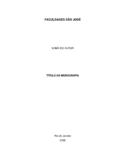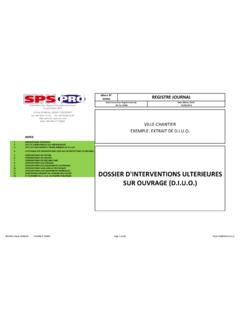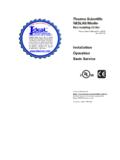Transcription of ISO 10993-7 Sampling - biochem-bcm.com
1 ISO 10993 -7:2008 Product Sampling Samples to be used for residual analysis shall be selected in such a manner as to be truly representative of the product. When selecting samples, attention shall be given to the many factors described in Annex D. Since many of these factors influence not only the initial levels of residuals in device components but also the rate of residue dissipation, they shall also be considered when test samples are drawn from a processed load and sent to the laboratory for analysis. Removal of the product samples from the processed load soon after a sterilization cycle is completed and shipment to a laboratory far from the sterilization site or storage in the laboratory for later analysis can jeopardize correlations of residual levels on the samples with those on the rest of the load.
2 Moreover, if samples cannot be drawn from the load and handled so that the effect on aeration conditions for the sample will be negligible, an experiment to establish the relationship between the sample aeration and load aeration at various seasons of the year shall be carried out.. Samples should remain with the product load until the day of analysis or until test samples are retrieved and immediately frozen. The time between removal of samples from a controlled aeration area and the beginning of extraction should be held to a minimum. Samples shall be sealed, shipped and stored frozen when analysis is delayed. Samples shall be shipped on dry ice on overnight delivery.
3 Dry ice shall remain in the shipping container throughout the shipment and be present when the package is opened in the laboratory..Testing should be carried out to measure hydrolysis of EO to EG. Extractions shall be started as soon as possible after the device has been removed from the packaging or pre-use preparations have been completed. BIOCHEM REQUIREMENTS The test samples shall be shipped to the laboratory as soon as taken from the load. The laboratory shall be informed of the shipment date. The information supplied from manufacturer shall include besides complete M001 at least : - Sterilization date - Device exposure duration (see enclosed table page 3) - Test date/s requested - If the manufacturer request Simulated use the contact duration of the device Minimum Sample quantity to be submitted for the test: a whole item or more items having a minimum total mass of 2 grams, for each item and for each time to be tested after sterilization Limits per device and equivalence of result in ppm are information not required to be mentioned on the Test Report by the norm.
4 If you want Biochem indicates this information on the Test Reports you shall request clearly on our M001 form. The Template of the Test Report is attached. Every modification of the template implies an additional cost. Annex D (informative) Factors influencing product residual Sterilization process parameters General overview Sterilization process parameters are defined in ISO 11135-1. However, to properly analyse residues in EO-exposed devices, it is necessary to recognise those parameters that have an effect on residue content. An understanding of EO kinetics may make it possible to address a family of like devices through the analysis of a worst-case representative.
5 Recognition of a family of similar products (that is, similar in size and use, material composition, packaging, EO exposure, water content, and exposure to environmental conditions) may preclude the necessity of analysing each item of the product line. The following parameters affect residue content and may allow analysis of one or more worst-case representatives. Material composition Materials vary considerably in their ability to absorb, retain and release EO. When conversion of EO to ECH is possible, two similar devices made of different materials are likely to have very different residue profiles. For example, materials that contain a source of free chloride ions exhibit a wide degree of variation in the concentration of ECH formed.
6 Similarly, a single device composed of two dissimilar materials may require a representative sample of both materials to ensure accurate analysis. Composition and size may be particularly important when considering the simulation of normal product use. Packaging Packaging materials vary widely in their abilities to allow penetration and dissipation both of EO gas and the other possible residues, which may in turn affect ECH residue levels. Packing density and the density of the shipping container are other sources of variability. Ethylene oxide sterilization cycle Process conditions under which the device is exposed to EO will affect the residue levels.
7 These conditions include gas concentration, exposure time, temperature, type of cycle (that is, pure EO or EO mixtures), humidity (including the quality of the water source), re-evacuations and air washes, and the product and load density or the configuration of the product load in the sterilizer. Aeration Residual EO in devices may vary as a function of aeration temperature, load density and configuration, air flow, loading pattern, surface area of products being aerated and aeration time. Some materials demonstrate aeration rates which can roughly double (aeration time reduced by one half) for each 10 C increase in aeration temperature.
8 Factors such as humidity, temperature, and air flow may influence ECH formation depending on EO content in the product after removal from the sterilizer. Analysts should be aware of seasonal variations in aeration rates when samples are stored under laboratory conditions which differ from the ambient warehouse conditions. Under certain circumstances, which can best be determined by experience, it may be necessary to hold samples prior to analysis under conditions that approximate the lowest temperature at which the product is likely to be stored during aeration. Sample retrieval Caution should be exercised when product samples are routinely removed for analysis from the sterilization load soon after the sterilization process is completed.
9 Caution should also be exercised when the product sample or an extract thereof is shipped to an analysis site remote from the sterilization site. In such cases, the errors associated with attempting to correlate the residue amounts on samples and on the rest of the load should be recognized and an experiment to establish the relationships between these conditions carried out. Controlling variables Given sufficient experimental evidence on residue diffusion kinetics ( , the rate of EO gas dissipation from the packaging for the range of given devices), it may be possible to group devices for quality assurance testing based on similarities of materials, manufacturing processes and use.
10 For such a classification system to work, the variables discussed above must be controlled. Lack of control may yield data about residue levels that are applicable only to the samples analysed. Table - ISO 10993 -7: 2008 Summary of allowable limits for EO and ECH (limits per device) Device category EO ECH Limited exposure devices (< 24 h) 4 mg (in the first 24 h) 9 mg (in the first 24 h) Prolonged exposure devices (> 24 h < 30 d) 60 mg/30 d (the first 30 days) 60 mg/30 d (the first 30 days) Permanent contact devices (> 30 d) 2,5 g/lifetime 10 g/lifetime Tolerable contact limits for surface contacting devices and implants (TCL) 10 g/cm2 or negligible irritation 5 mg/cm2 or negligible irritation Intraocular lens 0,5 g/lens/d 1,25 g/lens 4 x EO limits suggested Blood cell separator (apheresis)




